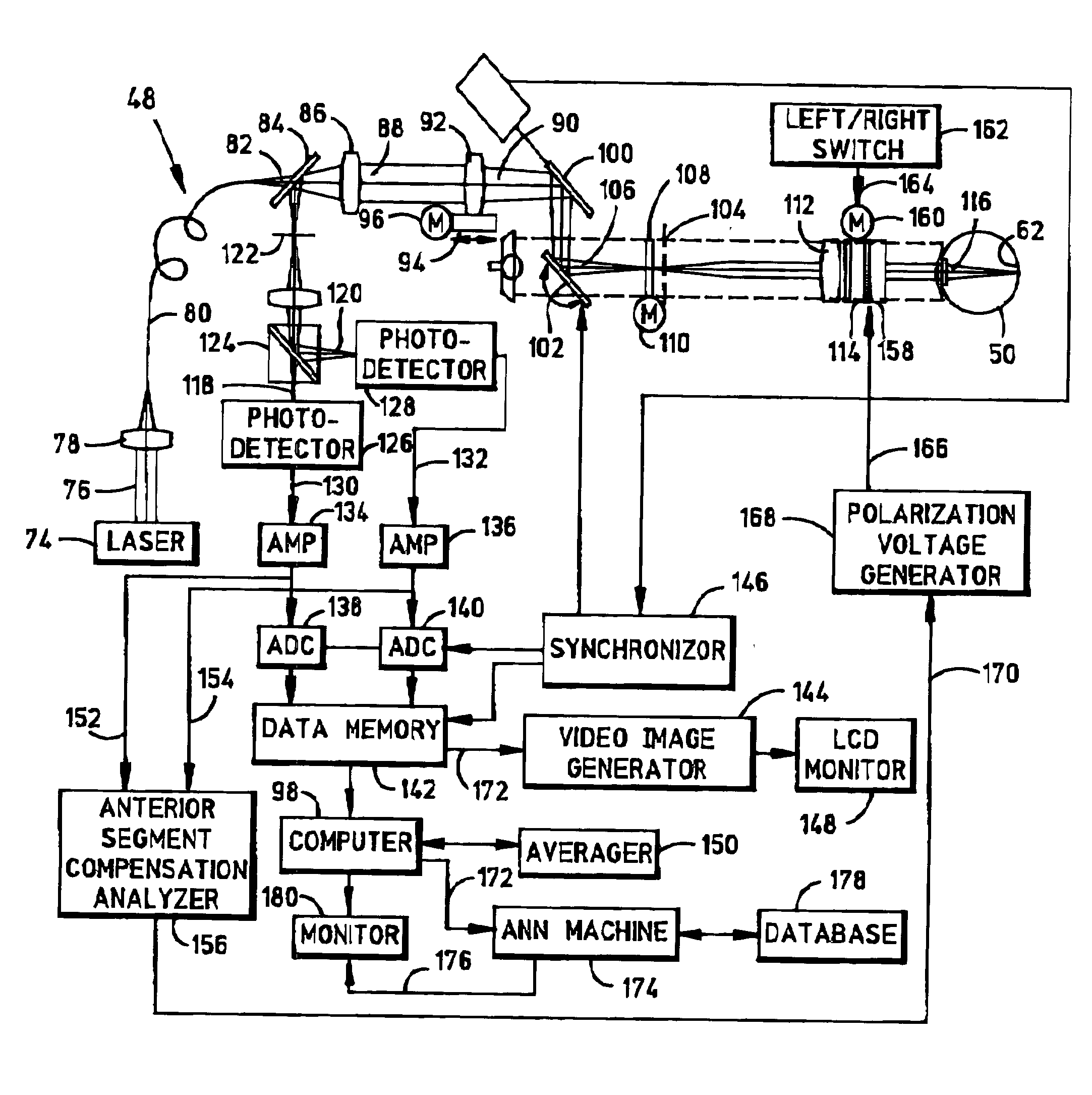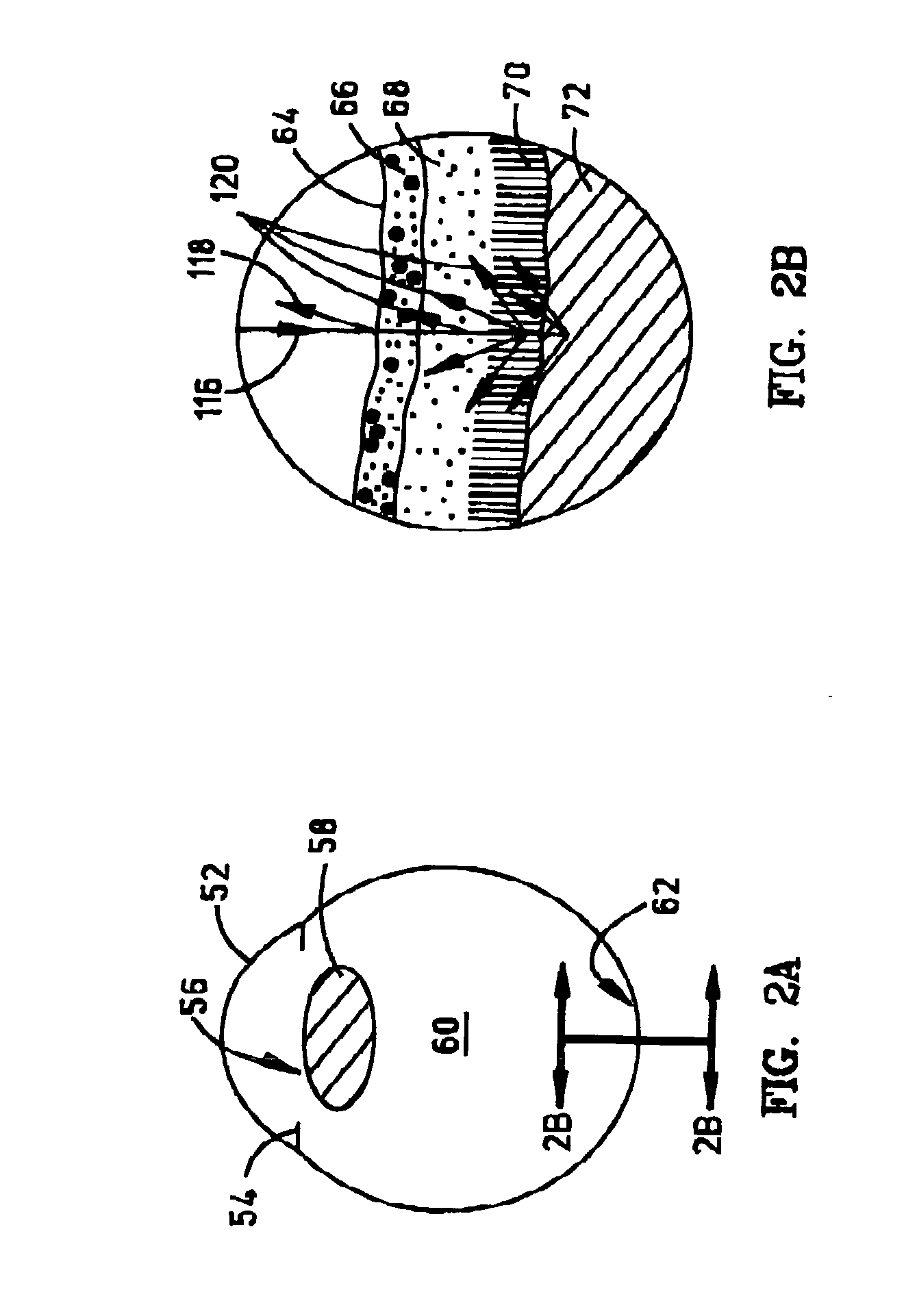Method and system for detecting the effects of alzheimer's disease in the human retina
a technology of alzheimer's disease and human retina, applied in the field of ophthalmological polarimeter systems, can solve the problems of inability to definitively confirm the diagnosis of ad, inability to cure ad, and inability to detect ad symptoms
- Summary
- Abstract
- Description
- Claims
- Application Information
AI Technical Summary
Benefits of technology
Problems solved by technology
Method used
Image
Examples
Embodiment Construction
[0027] As used herein, the term polarization "biasing" generically covers all types of polarization changes, including the rotation of the optical axis of polarized light, the change of linear to elliptically or circularly polarized light or vice-versa, and any combination of these. The term "polarimetry" refers to techniques for determining the polarization "bias" of a light beam. The term "polarimeter" refers to devices for performing polarimetry. The terms "spatially resolved retinal polarimetry" and "spatially resolved retinal polarimeter" refer to the technique and device for performing polarimetry, point by point, on the retina. The term "retardance map" refers to a two-dimensional display of retardance distribution measured with a spatially resolved polarimeter. The term "corneal birefringence" means anterior segment birefringence, including contributions of the lens in addition to the cornea; and the term "corneal compensator" is used to describe a device for neutralizing th...
PUM
 Login to View More
Login to View More Abstract
Description
Claims
Application Information
 Login to View More
Login to View More - R&D
- Intellectual Property
- Life Sciences
- Materials
- Tech Scout
- Unparalleled Data Quality
- Higher Quality Content
- 60% Fewer Hallucinations
Browse by: Latest US Patents, China's latest patents, Technical Efficacy Thesaurus, Application Domain, Technology Topic, Popular Technical Reports.
© 2025 PatSnap. All rights reserved.Legal|Privacy policy|Modern Slavery Act Transparency Statement|Sitemap|About US| Contact US: help@patsnap.com



